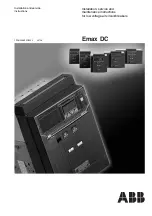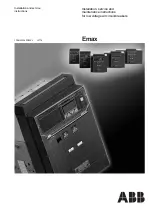
2 Engineering
2.3 Short-circuit protection of the motor-protective circuit-breakers
32
PKZM0-…/XTPR…BC1NL, PKZM0-…-T/XTPT…BC1NL
01/22 MN03402003Z-DE/EN
www.eaton.com
2.3 Short-circuit protection of the motor-protective circuit-breakers
The following table 2 shows the short-circuit breaking capacity of the
PKZM0-…/XTPR…BC1NL, PKZM0-…-T/XTPT…BC1NL motor-protective
circuit-breakers.
Fuse can be interconnected in the upstream circuit to increase the switching
capacity to 100 kA.
Table 2: Switching capacity of PKZM0-…/XTPR…BC1NL and PKZM0-…-T/XTPT…BC1NL
with type of coordination “1” and “2”
230 V
400 V
440 V
500 V
690 V
I
u
1)
I
q
2)
I
q
2)
I
q
2)
I
q
2)
I
q
2)
A
kA
kA
A
3)
kA
A
3)
kA
A
3)
kA
A
3)
0,16 - 1
150
N
150
N
150
N
150
N
150
N
1,6
N
N
N
N
N
2,5
N
N
N
N
5
50
4
N
N
N
N
3
50
6,3
N
N
N
42
50
3
50
10
N
N
50
50
42
50
3
50
12
50
50
50
50
50
50
15
50
3
50
16
50
50
50
50
50
50
15
50
3
50
20
50
50
50
50
50
50
10
50
3
50
25
50
50
50
50
50
50
10
50
3
50
32
50
50
50
50
50
50
10
50
3
50
No upstream protective device required, as it is the auto-protected range (150 kA)
N = Not required
1) Rated uninterrupted current I
u
2) Conditional rated short-circuit current I
q
according to IEC/EN 60947-4-1
3) Primary fusing is required if the short-circuit current exceeds the conditional rated short-circuit current (I
cc
> I
q
).
The conditional rated short-circuit current is determined by the primary fuse used:
100 A gG/gL, I
q
= 30 kA
50 A gG/gL, I
q
= 100 kA














































